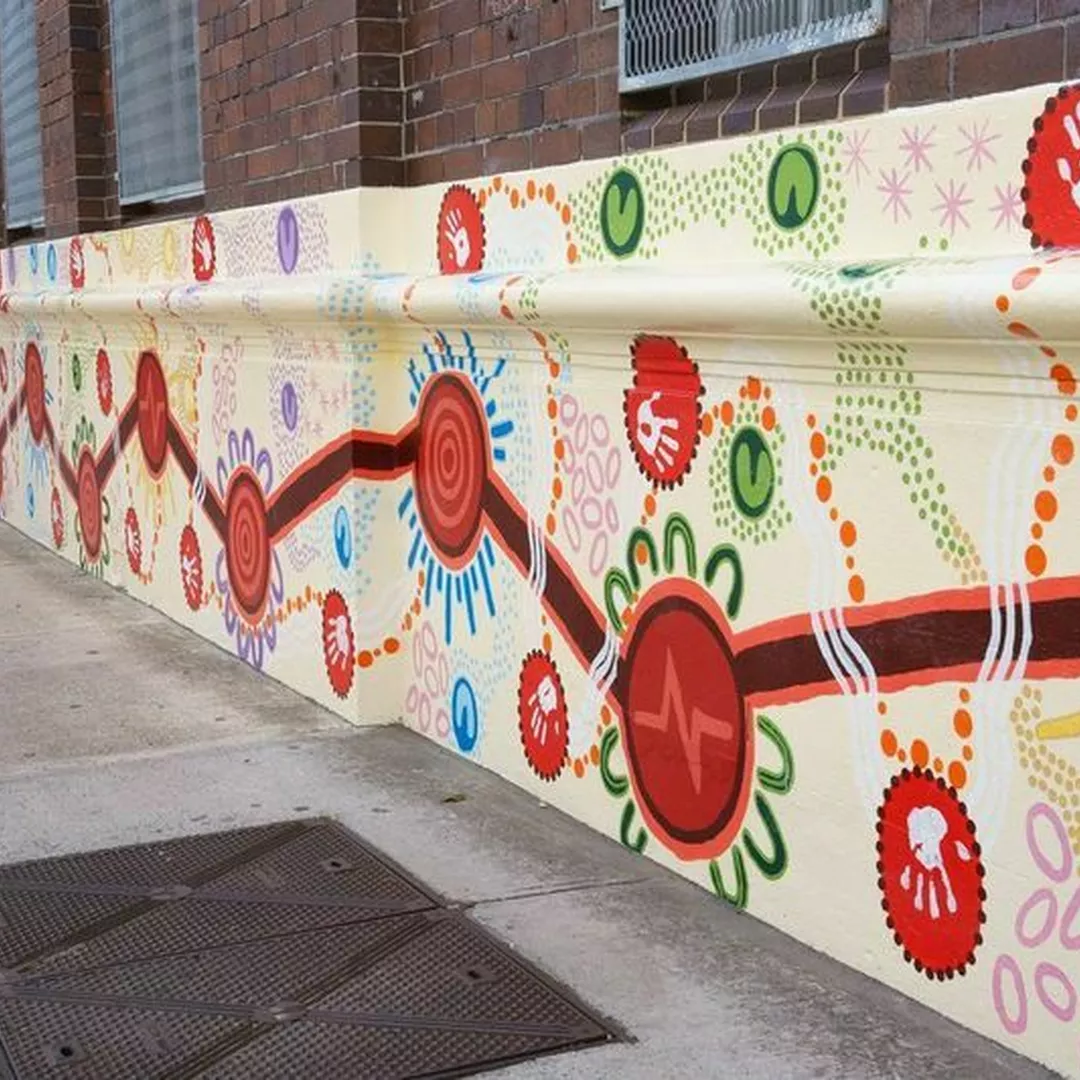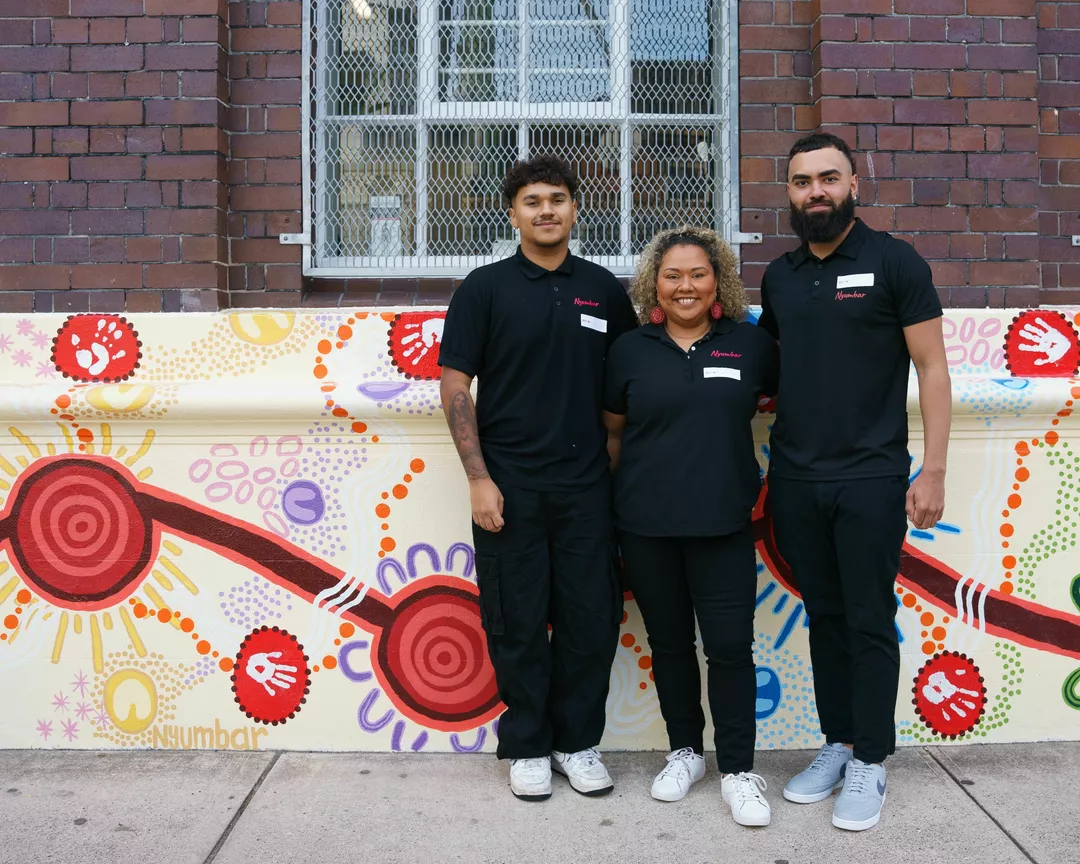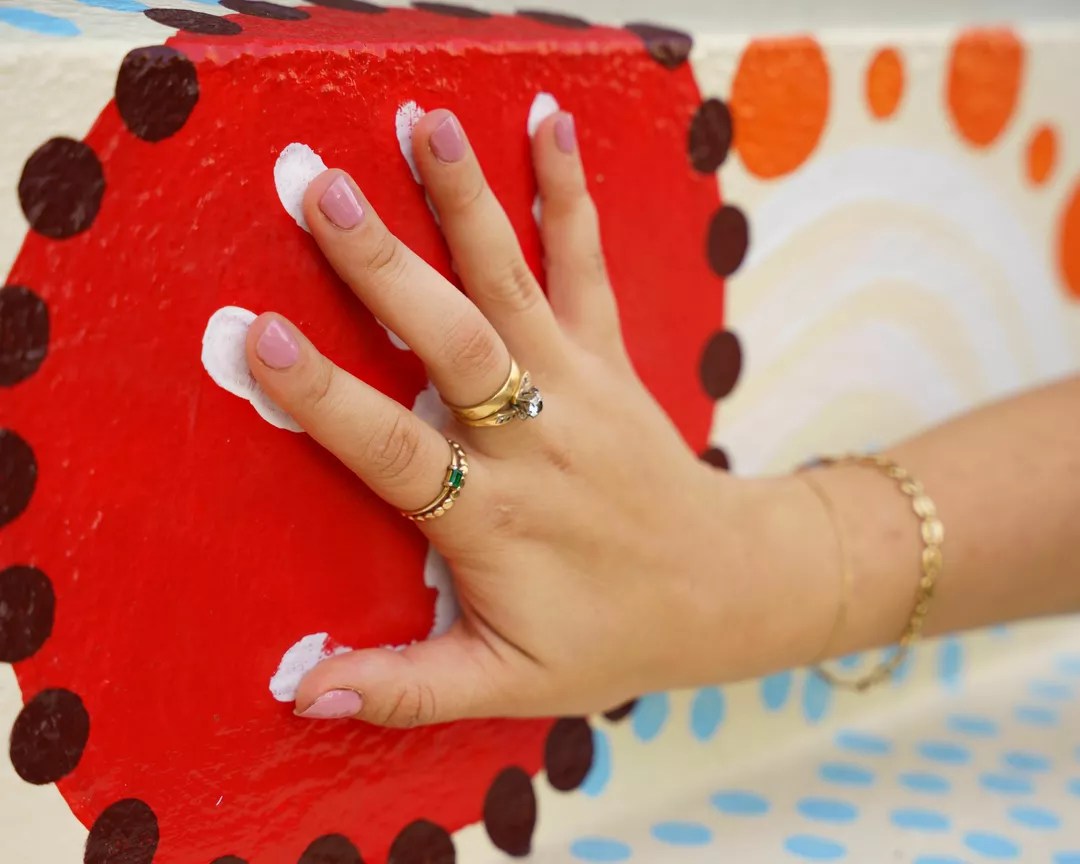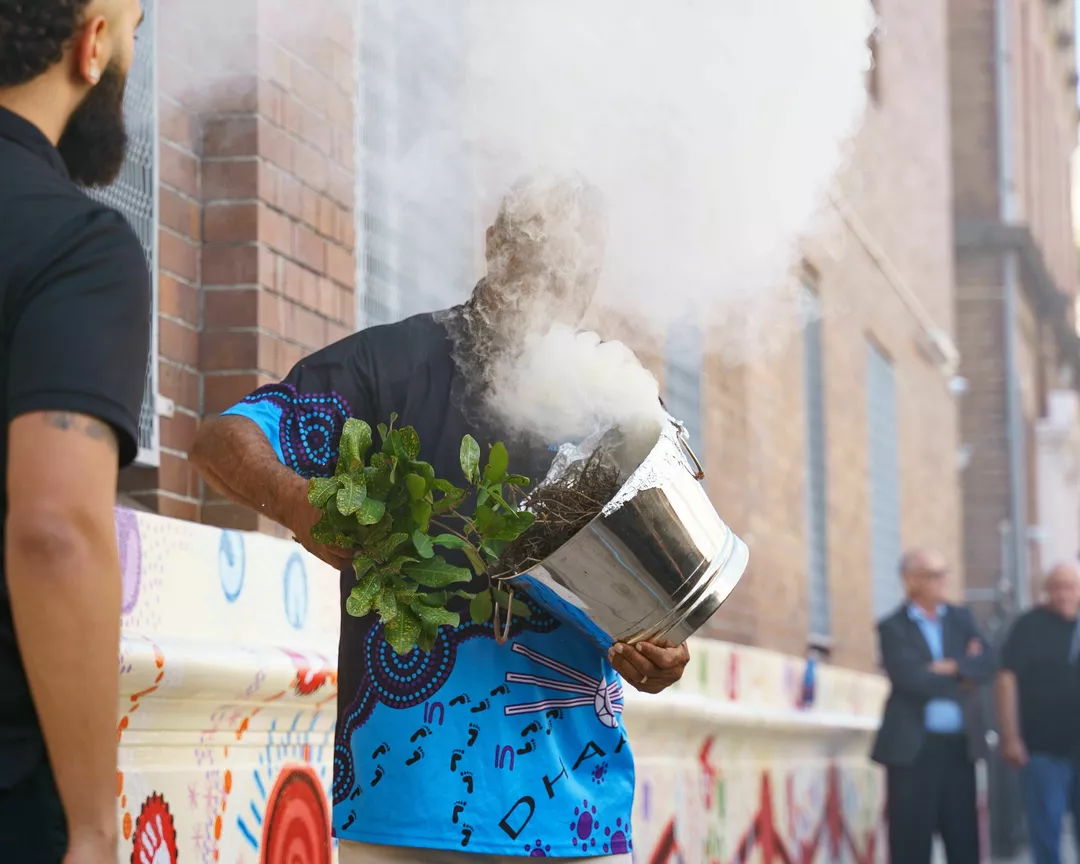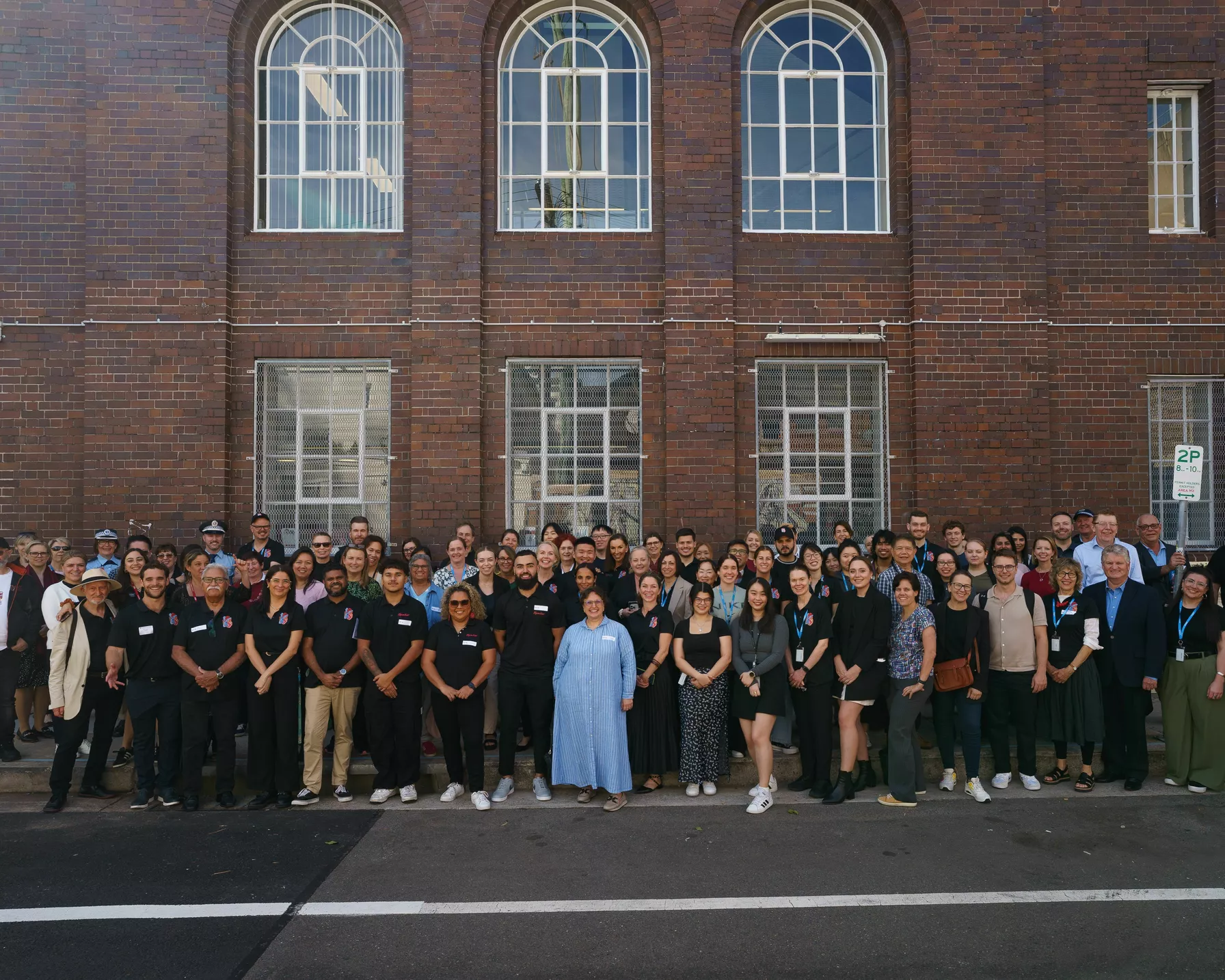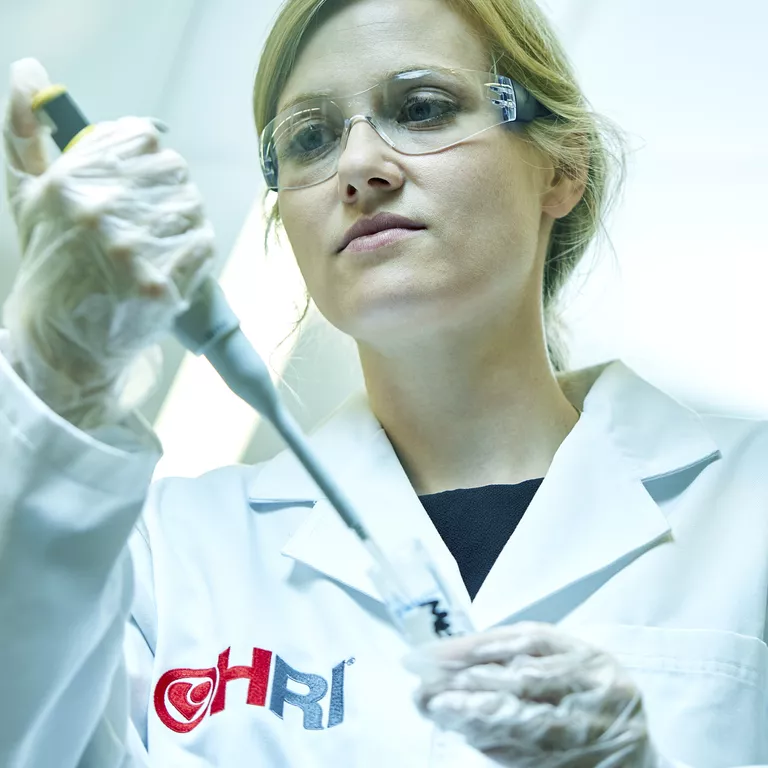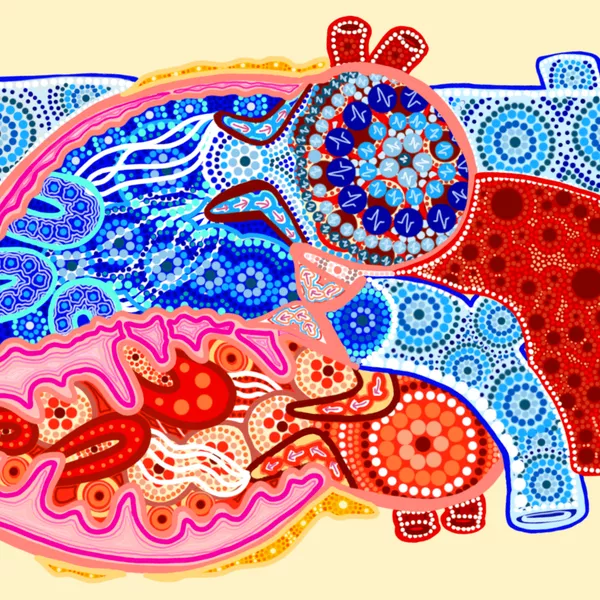
The Heart Research Institute (HRI), in collaboration with the Inner West Council, has proudly unveiled the ‘Banyar Dulguh’ mural, a remarkable piece of street art created by Bundjalung artist Deslyn (Dez) Marsh from Nyumbar Aboriginal Education.
The mural, painted on HRI’s external wall on Eliza Street, Newtown, was officially launched during Heart Week, drawing a large and enthusiastic crowd.
It was commissioned through Inner West Council’s Perfect Match Street Art program, which pairs artists with residents to create site-specific artworks. Originally launched as an initiative to address unwanted tagging and graffiti, the program has evolved to support emerging artists, foster legitimate creative expression, and cultivate meaningful community art.
Designed in collaboration with Aboriginal Elders from HRI’s Djurali Group for Aboriginal and Torres Strait Islander Health Research and Education, the mural symbolises unity, healing, and the shared commitment to improving cardiovascular health within Aboriginal and Torres Strait Islander communities. The word ‘Djurali,’ a Dharug term gifted by the Elders, means ‘to grow and learn’ - reflecting the group’s mission.
Painted over six days in March, the mural stretches an impressive 24 metres and features handprints from many HRI staff members, symbolising collective effort and community spirit.
The official launch on May 7, during Heart Week, featured a traditional smoking ceremony led by Uncle Raymond Wetherall. Attendees included HRI staff, board members, partners, supporters, council leaders, and community members who gathered to celebrate and learn about the mural’s cultural significance.
Artist Dez Marsh (centre) with her two sons, who also painted the mural and are part of Nyumbar Education.
Celebrating resilience and cultural heritage
Deslyn Marsh, the mural’s creator, shared her vision and welcomed guests to learn about the meaning behind the artwork’s different elements.
“Through this painting, I aim to celebrate the resilience of Aboriginal and Torres Strait Islander peoples, honour their rich cultural heritage, and contribute to the ongoing journey toward improved health outcomes for all.”
The setting of the painting is Gadigal Country, and it features various bush tucker plants throughout, which have long been used by Aboriginal communities for healing.
With over 18 years of experience in education, Marsh continues to deliver cultural programs across New South Wales, alongside her two sons, fostering understanding and appreciation of Aboriginal heritage.
The event featured a traditional smoking ceremony (left) and speakers including HRI's Assoc Prof Uncle Boe Rambaldini
A collaborative effort toward health equity
Acting Head of the Djurali Group, Associate Professor Uncle Boe Rambaldini, emphasised the mural’s significance.
“This mural represents the strength of collaboration,” he shared. “We know that coming together respectfully has the power to change and heal, to address the wounds in our nation and to create a better shared future for all people who call Australia home.
“Thank you so much to our artist Dez and her family for this magnificent piece of work. It certainly brightens up our building, this street and Newtown – and not only highlights the talent of Aboriginal people but also highlights HRI’s commitment to Aboriginal health.”
Dr Josephine Touma, Executive Producer of Creative Programs at Inner West Council, praised the project, which first came across her desk nine months ago.
“Seeing this mural come to life is truly extraordinary,” she said. “It embodies community spirit, and bridges art and health in a powerful, meaningful way.”
"Every Perfect Match project is unique, and Deslyn has gifted this street with a particular joy and energy that comes from deep engagement with the themes, place and the community. We hope the mural brings an additional sense of focus and identity to the work that you do here at the Heart Research Institute.”
Closing the health gap
HRI CEO and Scientific Director, Professor Andrew Coats, reinforced the organisation’s commitment to health equity and equality.
“At HRI, we are driven by our mission to reduce the impact of cardiovascular disease on all Australians, especially within our Aboriginal communities who are at considerable higher risk. We strive to close that health gap every day.”
“Thank you to Dez, and also to the Inner West Council for helping to make this magnificent artwork happen.”
The idea for the mural originated from a conversation between HRI’s Director of Human Resources, Elissa Dwyer, and Uncle Boe, highlighting the importance of Aboriginal artwork in creating welcoming, culturally safe spaces.
“We are thrilled to have this beautiful artwork displayed at the heart of Newtown,” said Ms Dwyer. “It symbolises inclusivity and our commitment to fostering a welcoming environment for everyone.”
Members of the public are encouraged to come and take a photo of the artwork and share it to social media with the hashtags #HRImural and #PerfectMatch.
Top Image caption: The new 24-metre long mural was unveiled in front of a large crowd.
Related research areas

